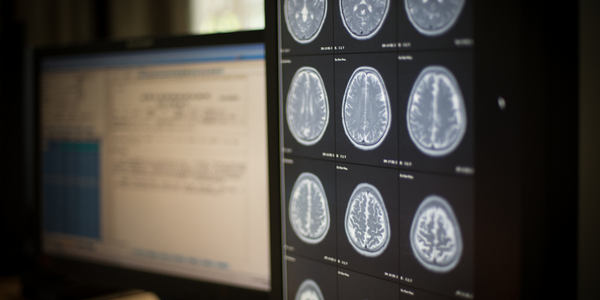公司规模
Large Corporate
地区
- Europe
国家
- France
产品
- Camunda
- Camunda Tasklist
- Camunda Operate
技术栈
- BPMN workflows
- Process Automation
实施规模
- Enterprise-wide Deployment
影响指标
- Cost Savings
- Productivity Improvements
技术
- 应用基础设施与中间件 - API 集成与管理
适用功能
- 采购
用例
- 自动化疾病诊断
服务
- 系统集成
关于客户
Sogema Technologies 正在实现耗时的土地所有权和契约登记流程的自动化,为其联邦、地区和市政府客户提供由 Camunda 提供支持的灵活解决方案。借助 Camunda,Sogema 简化了土地登记的流程,从最初的所有权搜索到登记、费用评估和征税。登记与地籍和历史所有权数据相关联,并与国家数据库共享,并使用 Camunda 流程自动化解决方案对 BPMN 工作流进行建模、运行和分析。
挑战
实现土地产权和税收的自动化需要开发工作流程,这些工作流程通常包含超过一个世纪的历史土地和产权数据、抵押信息、地籍图等。在某些情况下,新的产权可能会首次将以前未登记的土地纳入税单,从而创建新的记录,为市政当局增加税收收入。土地产权办公室还必须跟上不断变化的监管环境和税收结构。土地产权和契约登记的自动化工作流程并不是一成不变的,土地管理员需要灵活地定期定制产权和契约流程,并具有可视性,以确保高效处理和记录土地转让。
解决方案
Sogema 的 eLAND 解决方案协调土地和财产登记,从发起交易的公证人开始,通过历史所有权和留置权搜索到登记、费用评估和征税。eLAND 中的土地管理工作流程在 Camunda 中建模、执行和监控。该流程自动化,自动填充 eLAND 中的现有数据,将与登记相关的手动任务减少三分之二。然后需要手动支持的任务通过 Camunda Tasklist 自动分配,而 Camunda Operate 为用户提供有关未完成任务和交易仪表板的可见性。Operate 中的热图和仪表板允许土地管理官员监控工作流程和任务分配,识别流程中的瓶颈并确保及时处理登记,同时确保登记数据符合标准。工作流程支持文档管理、付款、电子签名记录等。Camunda 的流程自动化可轻松与现有数据库和文档管理解决方案以及收入和付款处理应用程序集成。登记与历史所有权和财产数据以及地籍记录相关联。
运营影响
数量效益

Case Study missing?
Start adding your own!
Register with your work email and create a new case study profile for your business.
相关案例.

Case Study
Artificial Intelligence and the implications on Medical Imaging
There are several factors simultaneously driving integration of AI in radiology. Firstly, in many countries around the world there is a discrepancy between the number of doctors trained in radiology and the rising demand for diagnostic imaging. This leads to greater demands for work efficiency and productivity. For example, the number of radiology specialists (consultant work- force) in England went up 5% between 2012 and 2015, while in the same period the number of CT and MR scans increased by 29 and 26 percentage points respectively. In Scotland, the gap widened even further (The Royal College of Radiologists 2016). Today, the average radiologist is interpreting an image every three to four seconds, eight hours a day (Choi et al. 2016).Secondly, the image resolution of today’s scanners is continuously improving – resulting in an ever greater volume of data. Indeed, the estimated overall medical data volume doubles every three years, making it harder and harder for radiologists to make good use of the available information without extra help from computerized digital processing. It is desirable, both in radiological research and in clinical diagnostics, to be able to quantitatively analyze this largely unexploited wealth of data and, for example, utilize new measurable imaging biomarkers to assess disease progression and prognosis (O’Connor et al. 2017). Experts see considerable future potential in the transformation of radiology from a discipline of qualitative interpretation to one of quantita- tive analysis, which derives clinically relevant information from extensive data sets (“radiomics”). “Images are more than pictures, they are data,” American radiologist Robert Gillies and his colleagues write (Gillies et al. 2016). Of course, this direction for radiology will require powerful, automated procedures, some of which at least will come under the field of artificial intelligence.

Case Study
Improving Diagnosis Accuracy and Saving Lives
Dr. Partho Sengupta needed a way to accurately identify disease patterns resulting from echocardiograms in order to improve diagnostics and save more lives. Specifically, he wanted to distinguish between two disparate diseases: cardiomyopathy, which directly impacts the heart muscle and often leads to heart failure, and pericarditis, which acts as if the heart is involved but doesn’t actually affect the heart. While both diseases present with similar heart conditions, the treatments are vastly different. For pericarditis, the treatment may include medication and, rarely, surgery. However, if the diagnosis is cardiomyopathy the patient undergoes medical management (i.e. a pacemaker) or in extreme cases, a heart transplant. Misdiagnosis of these disease conditions can put the patient’s life at risk and be very expensive for the hospital. Dr. Sengupta, therefore, looked to Saffron’s Natural Intelligence Platform to help his team increase the diagnosis accuracy of these medical conditions.
Case Study
Population Health Management Platform Anchors Arch Health’s Approach to Lowering Hypertension
Arch Health Partners, a multi-specialty group with over 90 providers at 13 locations in San Diego County, was facing a challenge with its hypertensive patient population. The group's hypertension statistics were below their expectations, and they were struggling to improve the health of these patients. The first step in driving better outcomes was identifying at-risk patients from within a large and growing patient population, which proved to be a more difficult challenge than originally expected. As the organization continued to grow, managing clinical data and improving quality scores became increasingly difficult due to manual processes. The organization realized that to increase the quality and frequency of patient engagement, they would need to automate some of their processes.
Case Study
HeartFlow's Transformation of Heart Disease Diagnosis and Treatment with AWS
HeartFlow, a medical technology company, is revolutionizing the diagnosis and treatment of heart disease with its non-invasive HeartFlow FFRct Analysis. This technology uses deep learning to create a personalized 3D model of the heart, allowing clinicians to better evaluate the impact of a blockage on blood flow and determine the best treatment. However, the company faced a significant challenge. Cardiovascular disease, the world’s leading cause of death, claims more than 17 million lives each year. The most common type, coronary artery disease (CAD), reduces blood flow to the heart, causing chest pain, heart attack, and death. Clinicians need to know if and where there is a blockage, and how it is affecting blood flow. This information is crucial in choosing the best treatment pathway for the patient, such as medical management, stenting or bypass surgery. However, the diagnostic coronary angiogram often used to detect CAD is invasive, expensive, and potentially risky. More than half of patients who undergo the test have no significant blockages, and the procedure can be associated with serious complications.
Case Study
Adaptive Biotechnologies Leverages Azure for Immune Medicine Platform
Adaptive Biotechnologies, a commercial-stage biotechnology company, has been working on harnessing the biology of the adaptive immune system to transform disease diagnosis and treatment. The company has built a proprietary immune medicine platform that decodes the genetic language of the adaptive immune system. However, the challenge was to synthesize this vast system of biology and tap into the full value of the massive clinical immunomics database generated. The company needed high-scale compute resources and machine learning capabilities to unlock the full potential of the research data. The immune system's complexity and the sheer volume of data generated by Adaptive’s dynamic clinical immunomics database, which includes more than 47 billion immune receptors, posed significant challenges.
Case Study
Stanford Medicine Uses Snorkel to Revolutionize Medical Imaging Data Labeling
Labeling training data for triaging models in medical imaging is a time-consuming process, often requiring person-months to person-years of radiologist time. This manual labeling is not only labor-intensive but also prone to human error, which can affect the accuracy and reliability of the models. The challenge was to find a more efficient and accurate method to label large datasets of medical images, which are crucial for developing and training machine learning models for disease diagnosis and patient monitoring.







